25 September. Today we wake up early and head north of Yeppoon to the edges of Byfield. This is an area with large plantations of non-native pine forest, and scattered native vegetation in some hard to reach spots. The pines pepper the landscape even in the areas that are now part of a state forest. In the outskirts we get a bit lost looking for a watering hole and end up in a small side road. On the edges of the dirt road we spot Grevillea banksii (Proteaceae), a shrub that produces the type of handsome red inflorescences that Australian birds love. But instead of pollinating birds we notice some small native bees stealing nectar. Our first native bees for a long while!
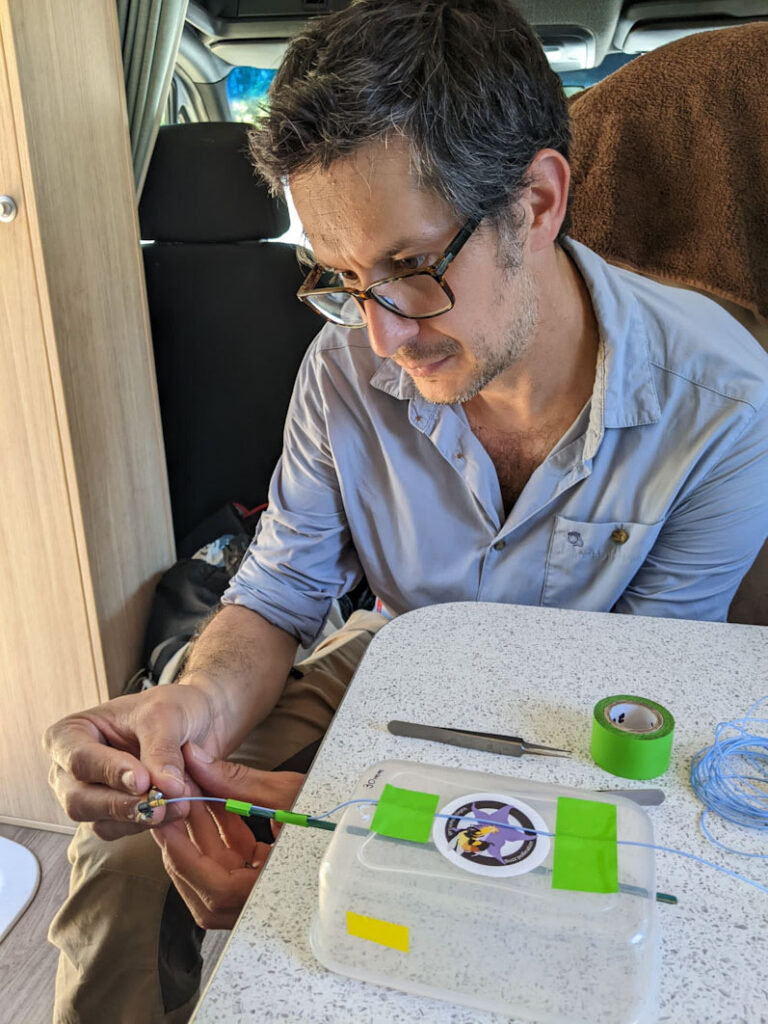
Quickly, we get to work and manage to capture a few specimens, which I later determine to be the stingless bee Tetragonula carbonaria (Apidae, Meliponini). These small bees resemble the stingless Trigona bees from the neotropics but have a rugged back (scutellum) that projects over the abdomen as if they were carrying a shield in their back. These bees refuse to produce defence buzzes and we record five individuals as non-buzzing. Although not unexpected, we are very happy to score this new species of a highly social, tropical bees as non-buzzing.
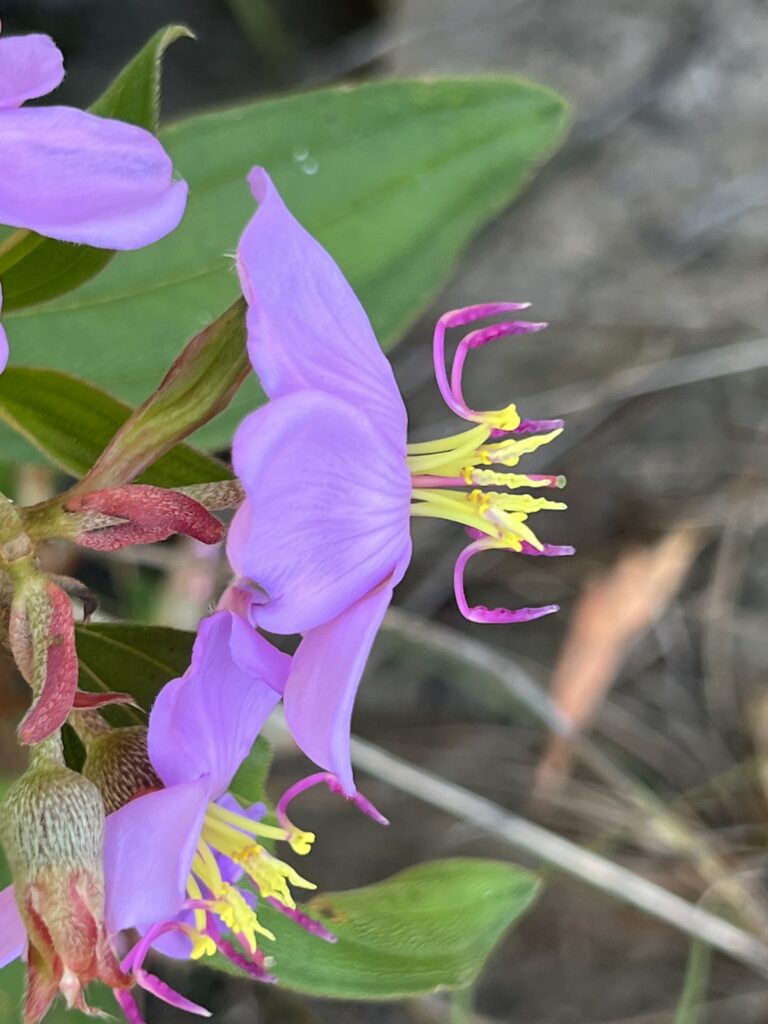
We keep searching nearby, and discover some bright magenta flowers in a small bush. This is plant clearly belongs to the family Melastomataceae, a curious tropical family in which the majority of species are buzz pollinated, which appears to be a highly unusual trait for an entire family. We are very excited about the findings of what then we established to be Melastoma malabatrichum, a species that others have studied before in the old tropics but for which I am unaware of pollination studies in Australia. In any case, it is the first time I see this species in the wild. The flowers are large with spread out petals and five bright yellow anthers carrying pollen at the centre of the flower. The anthers are poricidal, opening through small pores at the tips, which makes buzzing the most effective way to remove pollen from them. As they are nectar less, pollen is the only reward that this plant offers to visiting bees. But M. malabatrichum has a trick under its sleeve, because in addition of the five yellow anthers, each flowers carries a second set of purple anthers that mimic the colour of the petals. These inconspicuous anthers sneak behind the back of unsuspecting pollinators, which mostly ignore them while visiting the yellow anthers, and manage to put extra pollen in their back. The purple pollinating anthers are known as pollinating anthers, and the yellow as feeding ones. This is a classic example of heteranthery as studied by Charles Darwin and Fritz Muller in the middle of the XIX century.
Watching these mighty Melastomes, we see a large green bee zooming by, and in the excitement of seeing a buzz pollinator for the very first time in eastern Australia, I miss and let it escape! Bummer! We find more plants and wait patiently for it to come back. The mythical green bee never returns but instead we witness to black stripy buzz pollinators arrive to the melastome and we manage to catch them both. Hooray!
We go back to the Buzz Bus and record their buzzes. As the data is acquired by the computer we breath a sigh of relief of having the first buzzes of this trip.
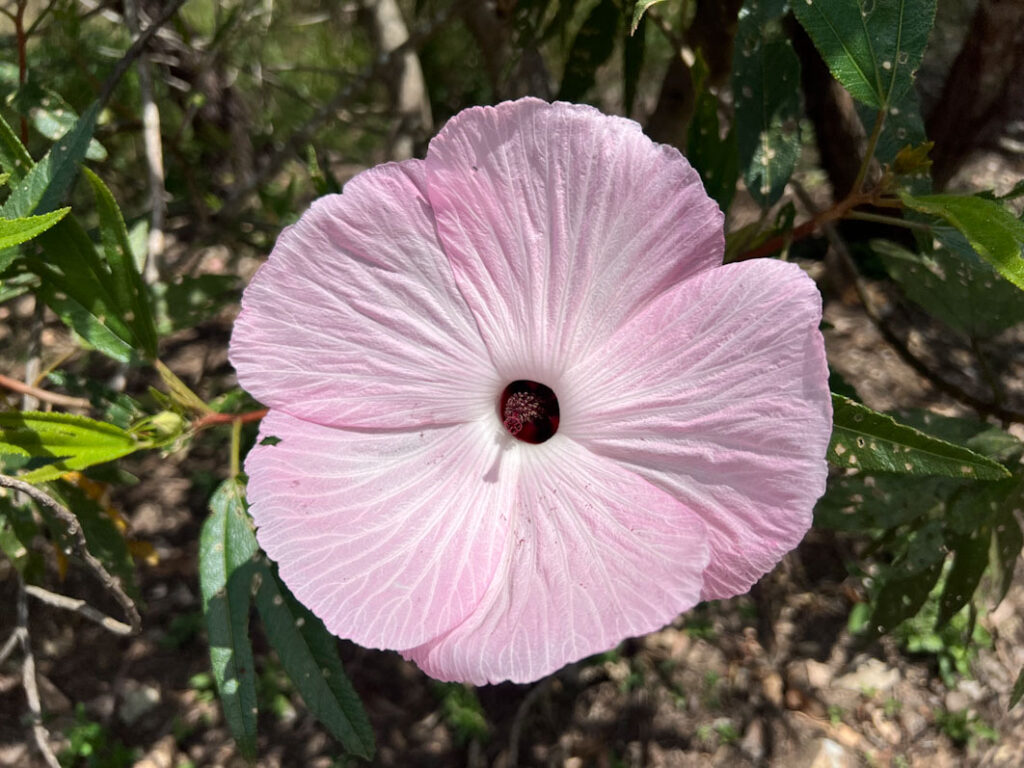
We go back to the field and wait for a while but no new buzz pollinators arrive. We spend the rest of the day exploring this and other parts of the region, but no more pollinators arrive. As the afternoon sets in, we pull over in a sign that says Capricorn Caves. The place is closing, but after some pledging they let us stay in their campsite that is under renovation. The nearby caves can be visited next day, and with the last rays of light of the day we walk in the beautiful forest that surrounds us.
Somehow we have found this little paradise of sharp karst in which caves occur above ground in small hills with ragged peaks. And below, we find a few well preserved fragments of dry tropical rainforest or vine scrub, where dense vegetation of broad leaves co-occur with woody vines that climb and twist among the trees. We see a few honeybees, wasps, beetles, spiders, but not native bees. As we walk a wallaby crosses my path and gets lost in the vegetation. I hear noises on my left and wait quietly to see a second wallaby come very close to me just to notice me and jump away in the forest.
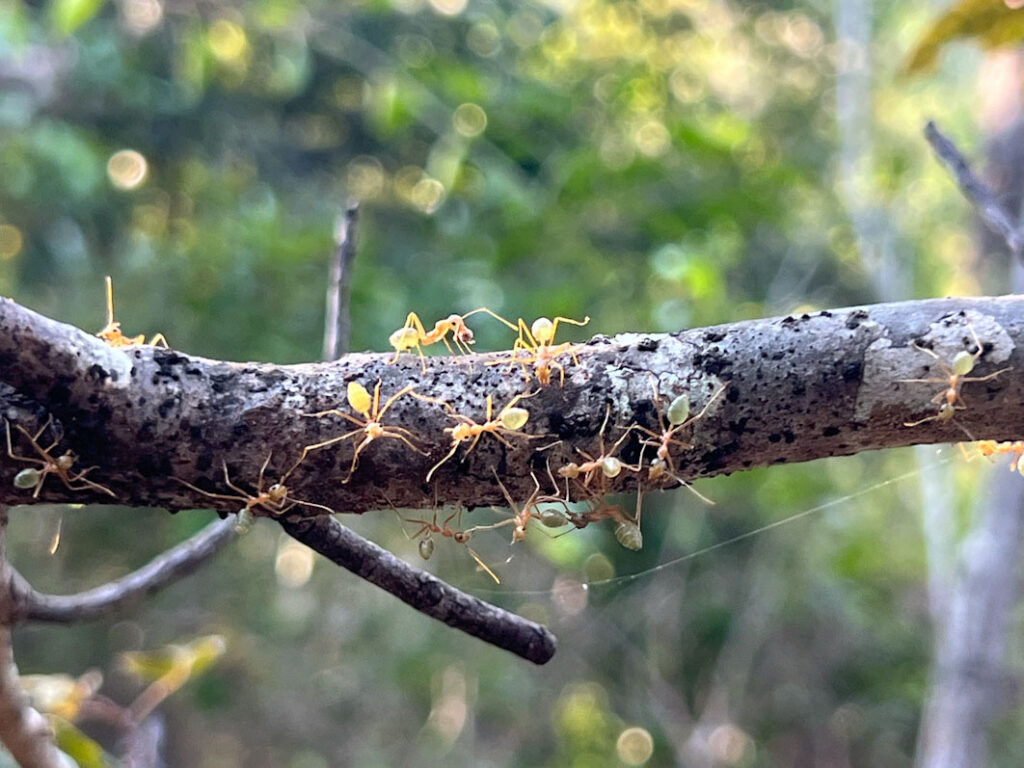
Ahead in the path, Daniel is admiring some green ants, a type of ants that use silk to tie tree leaves together and build aerial nests. The hanging nests are sensitive to vibrations and touching the branches cause a horde of green ants come looking for the trouble maker. It is best to keep your distance from their armies. Daniel tells me that aborigines used to eat the ants which have a citrusy flavour, and to prove his point he tries one. Apparently they’re indeed lemon like.
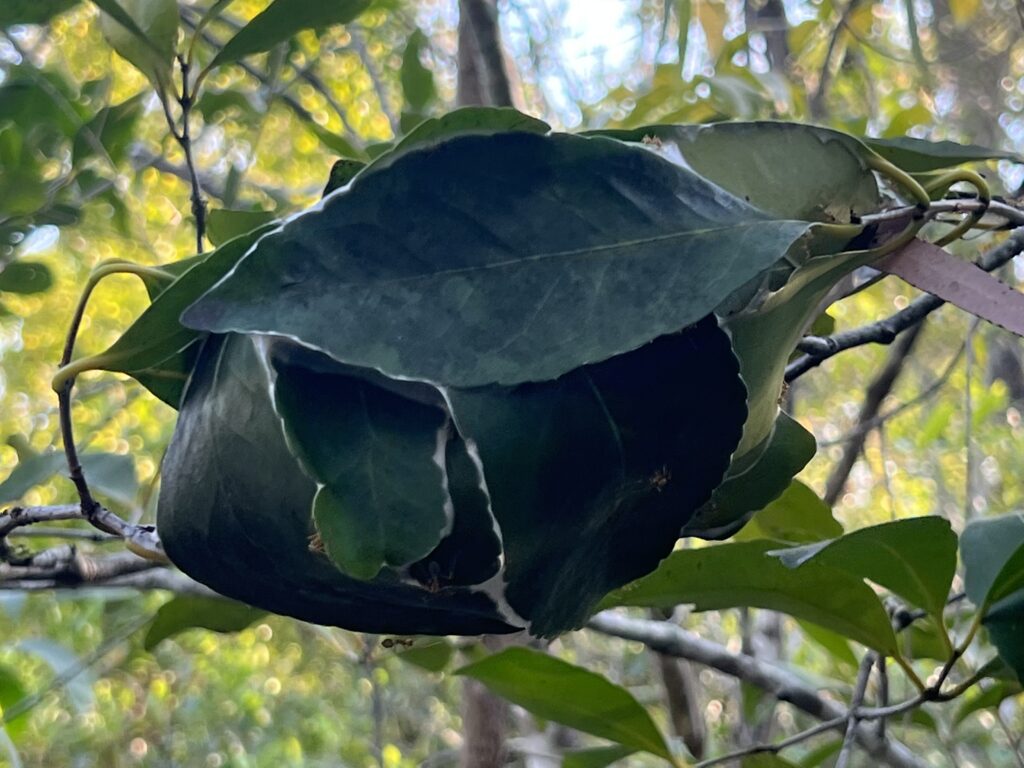
In the camp, a brush turkey (Alectura lathami) has adopted us and she waits for our arrival to see if she can find any scrap of food near the Buzz Bus. She is disappointed.
That night I photograph bees for measurement and make some notes of what we have seen over the last days. We go to bed late and tired but hoping that the next day brings more bees. Above in the sky, we see Scorpio, the Southern Cross and a bright Jupiter. The flashes of the camera go on for a while.